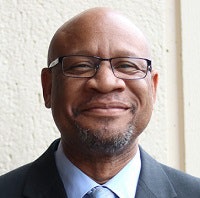In part I of Whose Responsibility Is It, we discussed the role of faculty in student success. Here we pose the same question, but from a slightly reframed lens.
Every instructor, teacher and professor was once a student in a classroom. Yes, times have changed significantly, yet the fundamentals of the college experience and the goals for your teaching and student learning remain universal. An academically sound student is a win for the instructor, the department, program major and the institution. An investment of just a modicum of time for reflection on your ability to solidify the student in their own role can yield major benefits in this equation. Consider the students’ perspective and how you, as an administrator or faculty member, might move them towards taking ownership of their success and achievement; securing collateral for their own academic learning bag.
 Dr. Sundra Kincey
Dr. Sundra KinceyGoing off to college and being away from home for the first-time can be a daunting task. One of the first heady realities of beginning the college experience is the freedom. You can come and go as you please, on campus and off. You can socialize and stay out until the wee hours of the morning, then return to your bed where you sleep soundly until noon. You can decide that you are simply too tired to make it to class, or you make it there but doze the entire time.
For many minority-serving institutions, historically Black colleges and universities (HBCUs) in particular, there are likely appreciable numbers of students with very similar experiences. As we reflect and are reminded of our own plight and possible missteps as a student, we can next consider how to temper our approach and cement students’ efforts. Often, students forget who has responsibility and elect to assign fault when the semester ends. They vent to their peers that “Professor X gave me this grade,” when in fact they earned it. To put it simply, we must make them own it, that success is determined by them but with the help of others only if they seek and ask for it. When a student comes to your office and says, “I need help,” what is your immediate response? Ours would be to congratulate that student on taking the first step to owning his or her academic success.
 Dr. Cheree Wiltsher
Dr. Cheree WiltsherHaving recognized the need for help, an active step was taken to get it. Of course, this conversation goes better if it does not occur at the very end of the semester, when dozens of students are crowding your office because they have just realized how they “really need to pass this course.” Now that the student has taken the first step, what other advice can you offer to help them to fully crystalize how their mindset and actions serve to hinder or solidify their securing collateral for their own learning? Perhaps starting with a few general but important questions about their motivations would help.
- What is your purpose?
- Why are you here?
- Who do you want to make proud?
- How will you accomplish this?
These questions can be the foundation for establishing rapport with your students. This may assist in not only getting the conversation started; but also serving to ease a student into opening up while lessening the fear of intimidation. For some, the answers to these questions are not only relevant but also affirming.
Additionally, there are more specific probing questions that require students to more pointedly assess and own the fact that their success belongs to them.
 Dr. Errick Farmer
Dr. Errick Farmer- What is your role in succeeding in this class?
- What is the grade you expect to earn at the end of the semester?
- How do you expect to earn this grade?
- How many hours do you expect to study each week for this class?
- What other resources are available to help you succeed in this class?
Instructors can encourage this as a routine self-assessment for students to return to, especially during midterm as they are evaluating whether they are doing their part to earn the grade they expect to receive. These questions compel students to reflect on their roles and place the responsibilities of learning on them. Here is where instructors can also offer a timely reminder that registering for classes represents more than your college enrollment status. These courses signify what you have literally signed up for. Your college degree will not be simply given to you for showing up for four years; it will be earned by persisting through the courses that are a part of your selected major curriculum.
Faculty and administrators are ever busy. We are constantly prepping for the next class, meeting, conference, research, committee work, and let us not forget the critical preparation for tenure and promotion. But we have an obligation to ensure that our students succeed. The questions mentioned above will promote goal-setting and reflection as students define and take ownership of securing collateral for their learning bag and ultimate academic success.
Consider the former student in you. What qualities or characteristics of your favorite professors most resonated with you? Were they those that were fun and had meaningful content? Those that were absolutely boring and unengaging? Those that established positive teacher-student relationships? Or some other variation?
Which is most likely to ensure student and institutional success? Which one are you?
Dr. Sundra D. Kincey is director of Program Quality in the Division of Strategic Planning, Analysis, and Institutional Effectiveness; Dr. Cheree Wiltsher is director and assistant professor in the School of Allied Health Science’s Division of Health Science; and Dr. Errick D. Farmer is an assistant professor of professional leadership development in the School of Business and Industry; all at Florida A&M University.





















